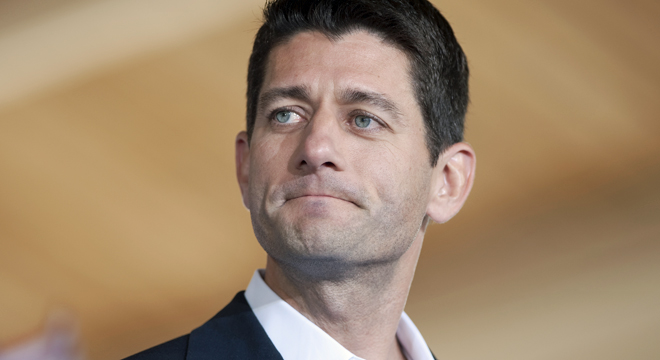Early in 2010, a little-known congressman named Paul Ryan introduced a radical blueprint to remake the federal budget. Two and a half years later, having won over nearly all congressional Republicans in updated versions of the proposal, he is the party’s vice presidential nominee to be.
Rep. Paul Ryan’s “Roadmap For America’s Future,” was the precursor to his sweeping budget proposals in 2011 and 2012 that nearly all Republicans voted for. Updated versions of some of its components, like the plans to remake Medicare and the tax code, were included, while others, like the proposals to privatize Social Security, were dropped.
Here’s a guide to some of its most sweeping reforms.
Privatize Social Security
Starting in 2020, Social Security benefits for new retirees would be cut, the eligibility age would gradually be raised and the program would be partially privatized. Workers would be permitted to invest more than one-third of their Social Security taxes in private retirement accounts, a huge boon for the financial sector. The plan guarantees a minimum payout and seeks to protect benefits against the whims of the market by shifting funds for near-retirees’ from stocks to government bonds.
The Congressional Budget Office found that the program’s solvency could grow unstable over time and payouts would “be more uncertain, despite the guarantee, because returns on stocks and corporate bonds are risky.”
The Social Security reforms were excluded from Ryan’s 2011 and 2012 budgets.
Upend Employer-Based Health Care
The Roadmap would eliminate the tax exclusion for employer-provided health insurance, a core foundation upon which which the modern system is built. It would be replaced with a refundable tax credit of $2,300 per adult and $5,700 per family to buy insurance on the market.
More than half of all American workers are on employer-based plans, according to 2010 Census data, and rolling back the tax break would ratchet up business costs and jeopardize coverage for those workers. On the flipside, the tax treatment of employer-based plans has been criticized across ideologies as unfair to individuals who don’t receive coverage via their job and a cause of runaway medical cost inflation.
This part of the plan did not make it into his subsequent 2011 and 2012 budgets.
Convert Medicare Into A Voucher System
For Americans turning 65 in 2020, Medicare would no longer exist as an insurance plan that directly pays medical bills for the elderly. The eligibility age would be incrementally raised, and the program would be converted into a voucher system which seniors could use to shop for policies from a menu of private insurance plans. The value of the voucher would adjust for age and health status of beneficiaries.
The reforms would resolve the program’s long-term finances, but by ending the coverage guarantee for seniors and hiking their out-of-pocket costs.
This part of the Roadmap was altered in the 2011 and 2012 budgets. The 2012 version introduces a government option among the insurance options that seniors may buy into, among other changes.
Unwind Medicaid And The Children’s Health Insurance Program
Medicaid would be converted into a block grant for states, which would not keep up with the growth of medical costs. With some exceptions for people with disabilities, many low-income individuals and families who rely on the program to provided needed care would no longer be able to afford adequate coverage.
The Children’s Health Insurance Program would be abolished and replaced with family health insurance tax credits and some low-income assistance.
Reforms unwinding Medicaid and CHIP were included in Ryan’s subsequent budgets.
Massively Cut Taxes For The Rich
The tax rate on high incomes would be cut nearly to 25 percent, by nearly 15 percent from current law. The capital gains tax, dividends tax, estate tax and corporate tax — all of which are enjoyed by mostly wealthy people — would be repealed.
According to the nonpartisan Tax Policy Center, the annual tax burden would be cut by over a quarter-million dollars for the top 1 percent; by half a million dollars for people earning over $1 million, and by $1.7 million for the top 0.1 percent.






